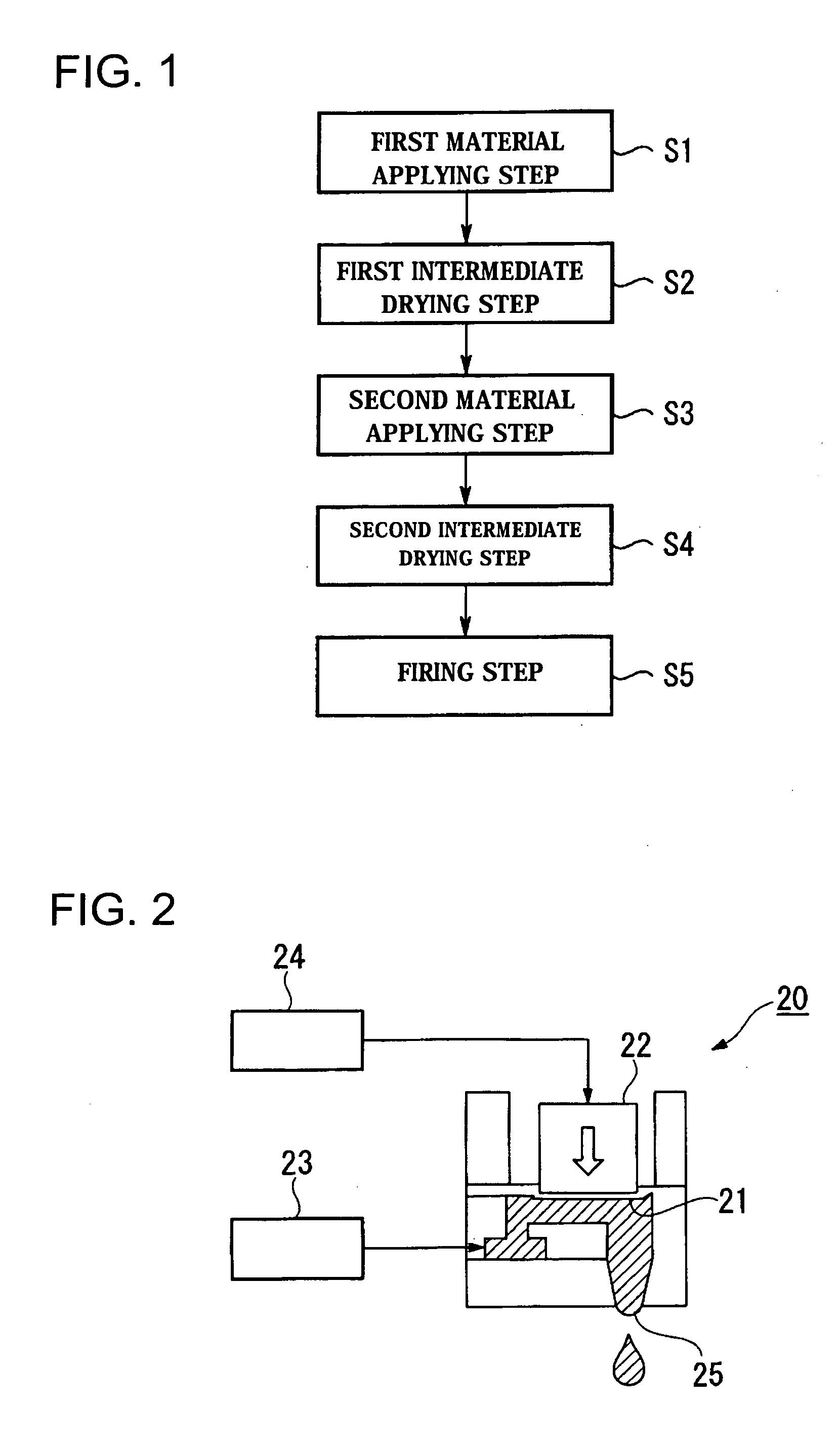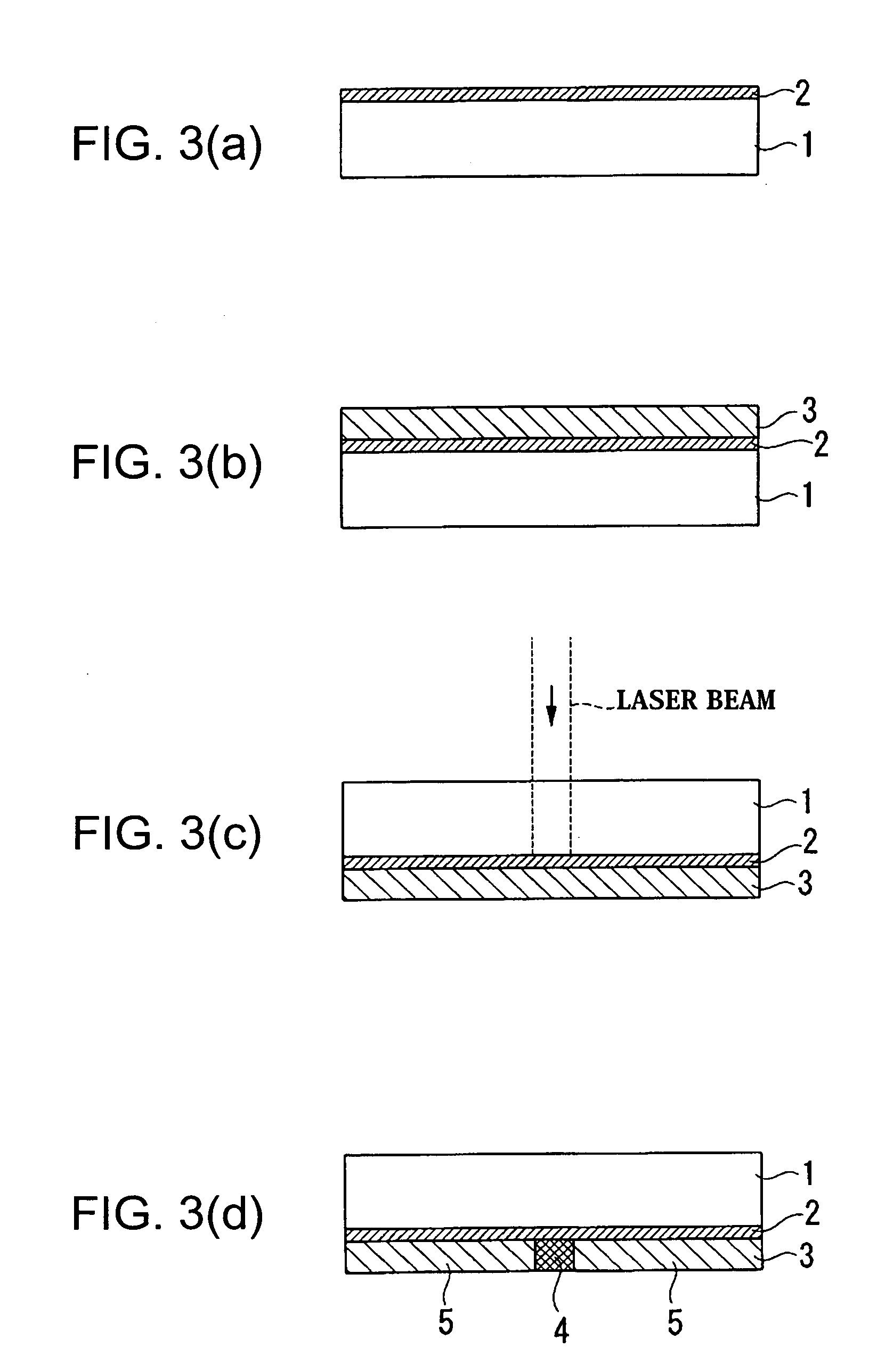Method for forming patterned conductive film, electrooptical device, and electronic appliance
a technology of patterned conductive film and electrooptical device, which is applied in the direction of cable/conductor manufacture, metallic pattern materials, nuclear engineering, etc., can solve problems such as heat distortion, and achieve the effects of developing conductivity, high production efficiency, and efficient conversion of light energy
- Summary
- Abstract
- Description
- Claims
- Application Information
AI Technical Summary
Benefits of technology
Problems solved by technology
Method used
Image
Examples
Embodiment Construction
[0027] Methods to form a patterned conductive film according to exemplary embodiments of the present invention will now be described with reference to the drawings.
[0028]FIG. 1 is a flow chart of a method to form a patterned conductive film according to an exemplary embodiment of the present invention. In FIG. 1, the method to form a patterned conductive film according to this exemplary embodiment includes a first material application step (Step S1) of applying a functional liquid containing a photothermal conversion material onto a substrate; a first intermediate drying step (Step S2) of drying the functional liquid applied on the substrate to form a photothermal conversion layer; a second material application step (Step S3) of applying another functional liquid containing a conductive material onto the photothermal conversion layer; a second intermediate drying step (Step S4) of drying the functional liquid applied on the photothermal conversion layer to form a conductive layer; ...
PUM
| Property | Measurement | Unit |
|---|---|---|
| Electrical conductor | aaaaa | aaaaa |
| Energy | aaaaa | aaaaa |
Abstract
Description
Claims
Application Information
 Login to View More
Login to View More - R&D
- Intellectual Property
- Life Sciences
- Materials
- Tech Scout
- Unparalleled Data Quality
- Higher Quality Content
- 60% Fewer Hallucinations
Browse by: Latest US Patents, China's latest patents, Technical Efficacy Thesaurus, Application Domain, Technology Topic, Popular Technical Reports.
© 2025 PatSnap. All rights reserved.Legal|Privacy policy|Modern Slavery Act Transparency Statement|Sitemap|About US| Contact US: help@patsnap.com



